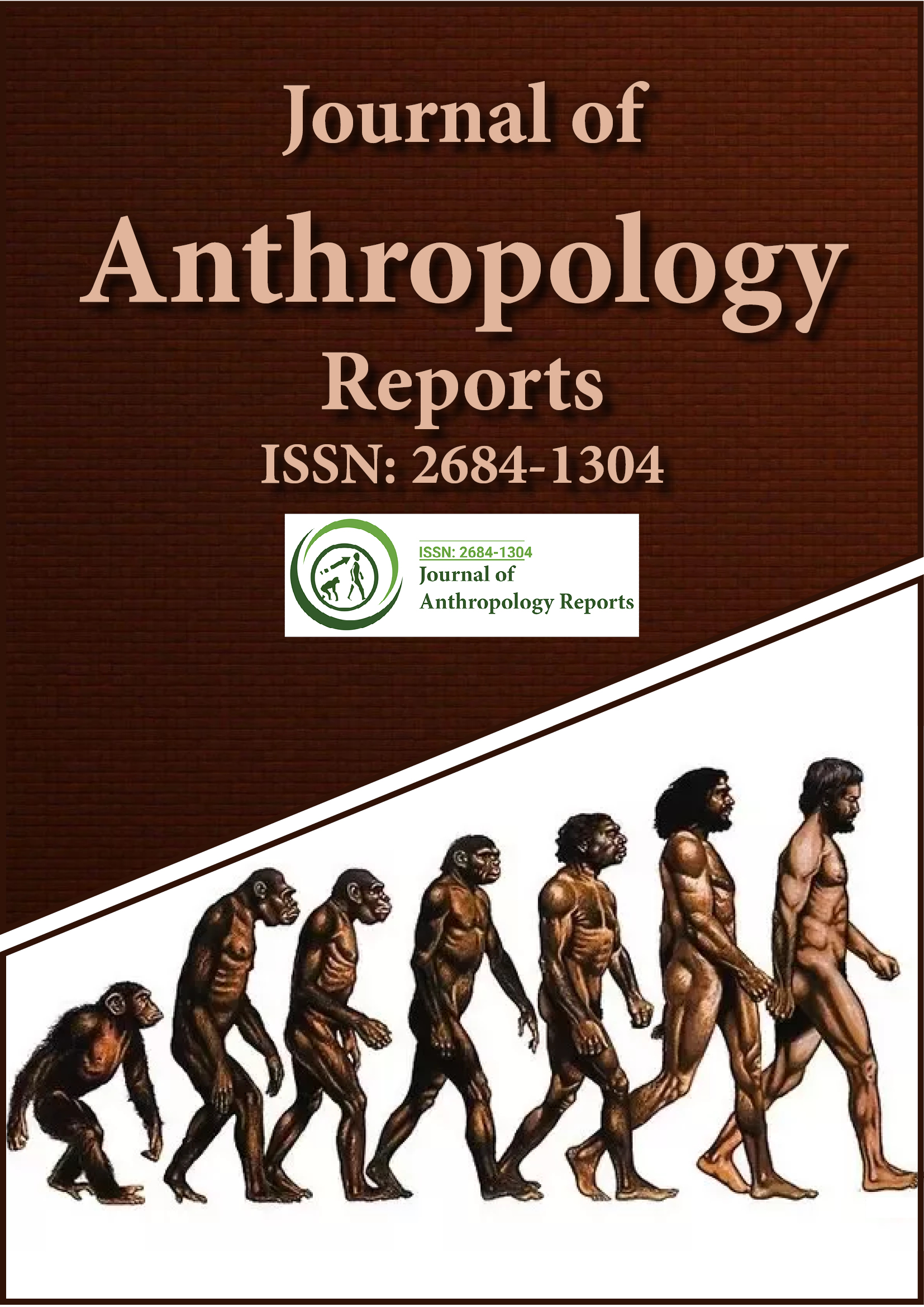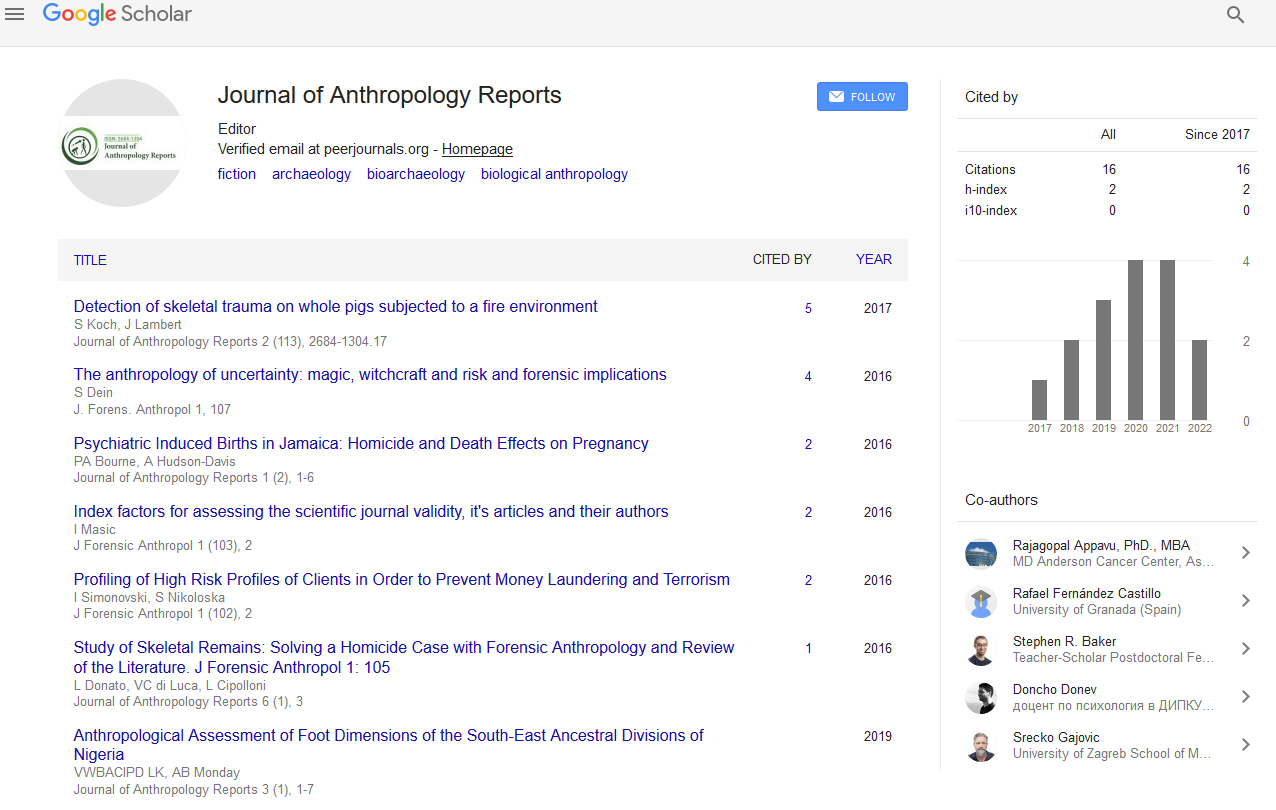Indexed In
- RefSeek
- Hamdard University
- EBSCO A-Z
Useful Links
Share This Page
Journal Flyer

Open Access Journals
- Agri and Aquaculture
- Biochemistry
- Bioinformatics & Systems Biology
- Business & Management
- Chemistry
- Clinical Sciences
- Engineering
- Food & Nutrition
- General Science
- Genetics & Molecular Biology
- Immunology & Microbiology
- Medical Sciences
- Neuroscience & Psychology
- Nursing & Health Care
- Pharmaceutical Sciences
Commentary - (2024) Volume 7, Issue 4
Climatic Effects and Evolutionary Processes in Limb Proportions: Understanding Human Adaptation
Victoria Coleman*Received: 29-Nov-2024, Manuscript No. JFA-24-28383; Editor assigned: 02-Dec-2024, Pre QC No. JFA-24-28383 (PQ); Reviewed: 16-Dec-2024, QC No. JFA-24-28383; Revised: 23-Dec-2024, Manuscript No. JFA-24-28383 (R); Published: 30-Dec-2024, DOI: 10.35248/2684-1304.24.7.207
Description
The study of human limb dimensions provides valuable insights into the ways in which humans have evolved and adapted to their environments over time. Limb proportions and growth patterns can vary considerably across populations, with different geographical regions exhibiting distinct traits influenced by factors such as climate, ecology and evolutionary history. One of the most intriguing questions in human biology is how ontogenetic trajectories-patterns of growth and development-of limb dimensions are shaped by both climatic effects and neutral evolution. This commentary explores the complex interplay between these factors and discusses how they contribute to the observed variation in human limb dimensions.
Humans have long been a subject of interest in the study of climate adaptation and limb dimensions are often seen as a key indicator of how our ancestors adapted to various environmental conditions. The relationship between climate and limb proportions is well-known in the context of Bergmann’s Rule and Allen’s Rule, which postulate that body size and limb length are influenced by temperature. According to these rules, populations living in colder climates tend to have shorter limbs and larger body mass to conserve heat, while those in warmer climates tend to have longer limbs to dissipate heat. This trend is evident in various human populations, from those in the Arctic regions to those living near the equator.
While these climatic effects are significant, it is equally important to recognize that much of the variation in limb dimensions is also the result of neutral evolutionary processes. Neutral evolution refers to the genetic changes that occur in a population due to random genetic drift rather than selective pressures. Over time, populations may accumulate neutral mutations that influence traits like limb proportions, even in the absence of direct environmental pressures. These mutations can be spread throughout a population simply by chance, leading to the persistence of certain limb characteristics that are not directly tied to environmental adaptation.
The interaction between climatic effects and neutral evolution complicates the study of human limb dimensions. For example, populations in regions with similar climates may exhibit different limb proportions due to genetic differences that arose through neutral processes. Conversely, populations in disparate climates may exhibit similar limb dimensions due to shared genetic mutations that were favored by neutral evolutionary mechanisms. This dual influence of climate and neutral evolution suggests that ontogenetic trajectories of limb growth are not solely determined by environmental factors but also by complex genetic and evolutionary histories.
An interesting case in point is the comparison between populations from the African savannah and those from the highaltitude regions of the Andes. Both groups have adapted to their respective environments in ways that influence limb dimensions savanna dwellers have longer limbs to aid in heat dissipation, while high-altitude populations exhibit shorter limbs due to the colder temperatures and lower oxygen availability. However, when examining these populations from a genetic perspective, one can also observe differences in the way limb proportions have evolved due to neutral evolution. This emphasizes the point that while climate is a significant driver of adaptation, neutral evolutionary processes can lead to further divergence in traits that are not directly linked to survival.
Another factor to consider is the role of migration and gene flow between populations. As humans migrated out of Africa and settled in various parts of the world, gene flow between populations contributed to the mixing of genetic traits. This interaction between populations with different climatic adaptations led to the spread of genetic variants that affect limb proportions, regardless of environmental factors. This genetic exchange has played a role in shaping the ontogenetic trajectories of limb dimensions in modern human populations, complicating the relationship between climate and limb growth.
In conclusion, the variation in limb dimensions across human populations is a product of both climatic effects and neutral evolution. Climatic factors, such as temperature, have historically played a significant role in shaping limb proportions as humans adapted to diverse environmental conditions. However, neutral evolutionary processes, including genetic drift and gene flow, also contribute to the variation in limb dimensions, leading to differences between populations that cannot be fully explained by climate alone. The study of these factors offers valuable insights into the complexity of human evolution and highlights the importance of considering both environmental and genetic influences when studying human traits. As research in this area continues to evolve, it will be important to further explore how these dual forces climate and neutral evolution interact to form the physical characteristics of human populations.
Citation: Coleman V (2024). Climatic Effects and Evolutionary Processes in Limb Proportions: Understanding Human Adaptation. J Anthropology Rep. 7:207.
Copyright: © 2024 Coleman V. This is an open-access article distributed under the terms of the Creative Commons Attribution License, which permits unrestricted use, distribution, and reproduction in any medium, provided the original author and source are credited.

